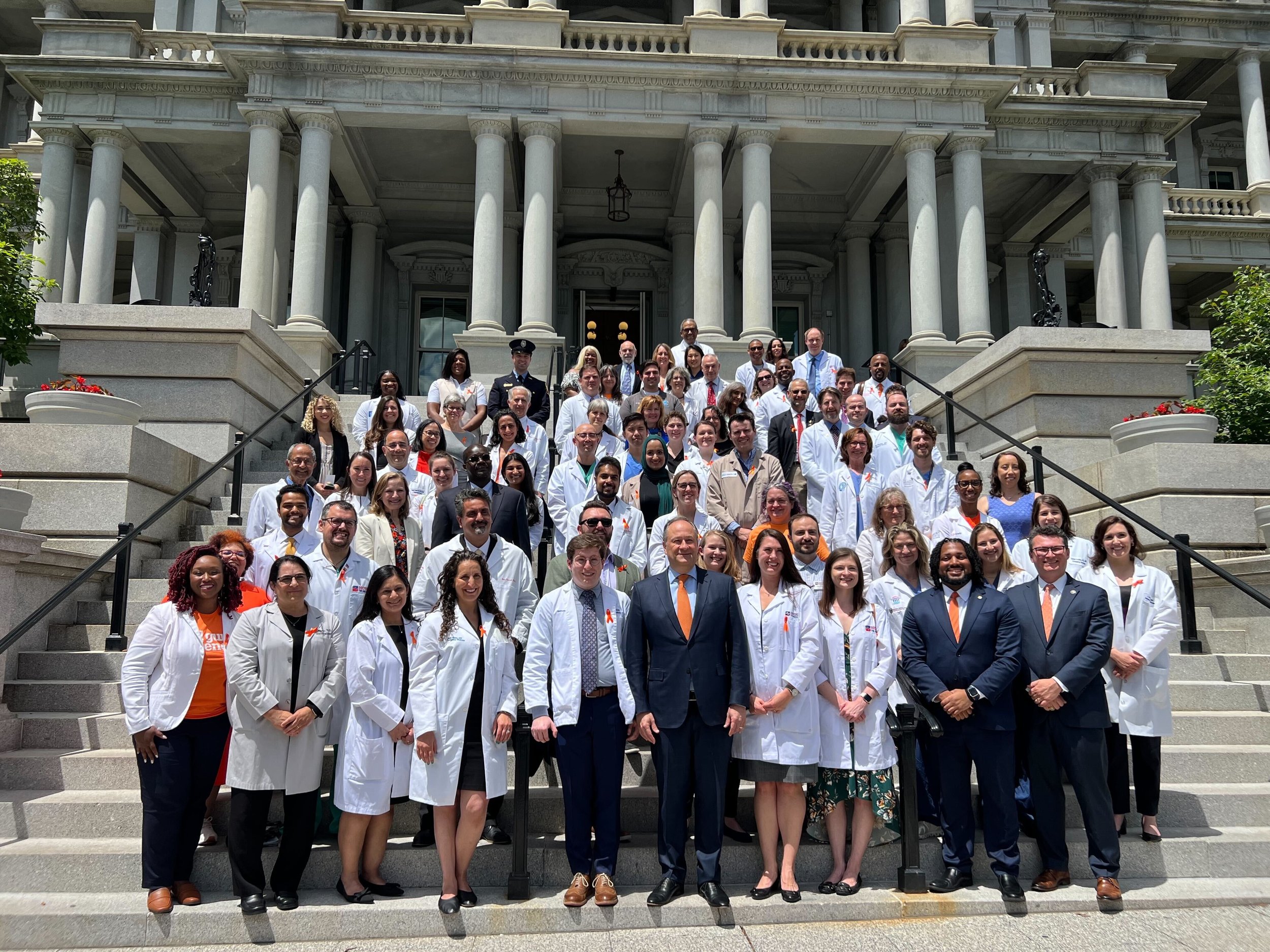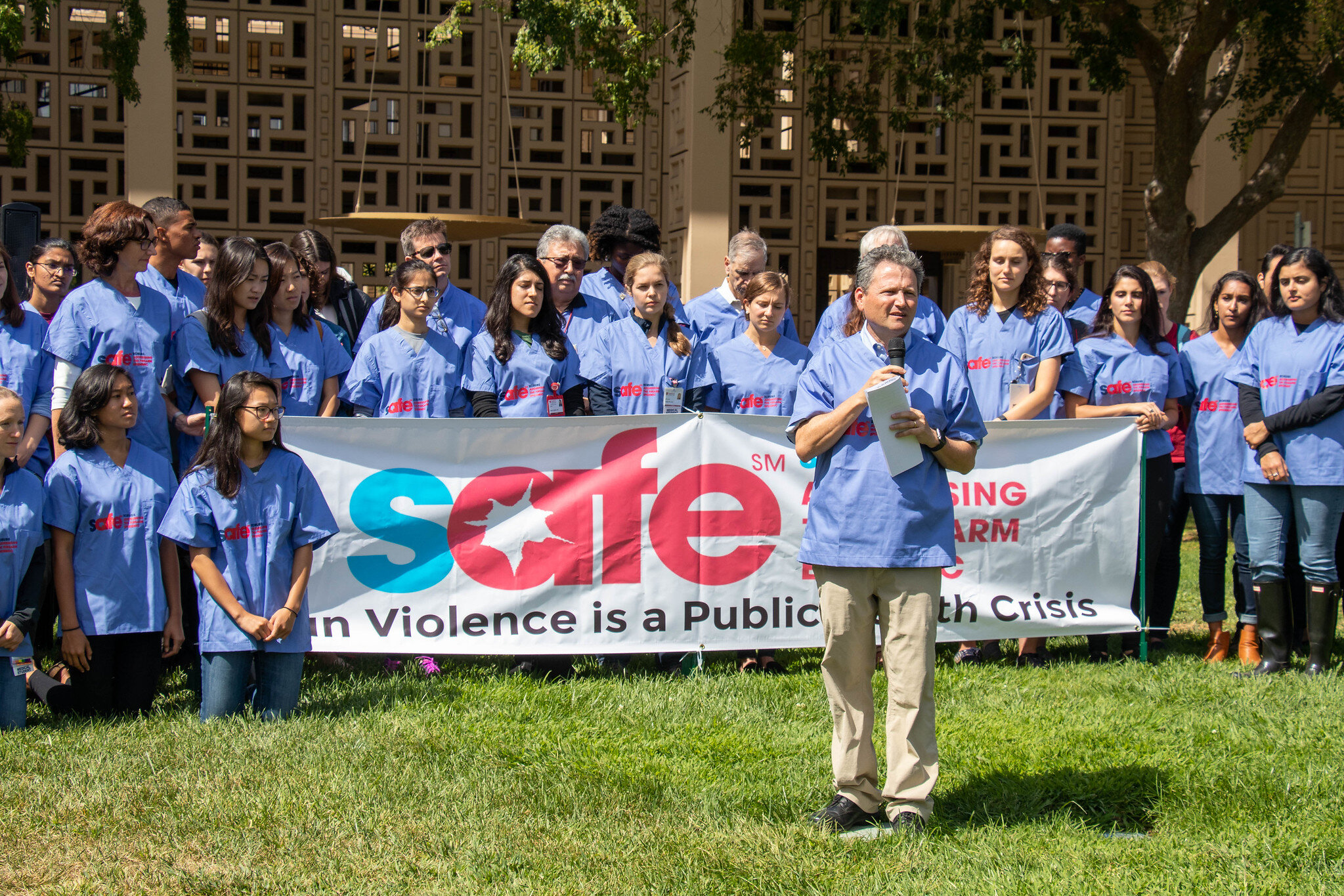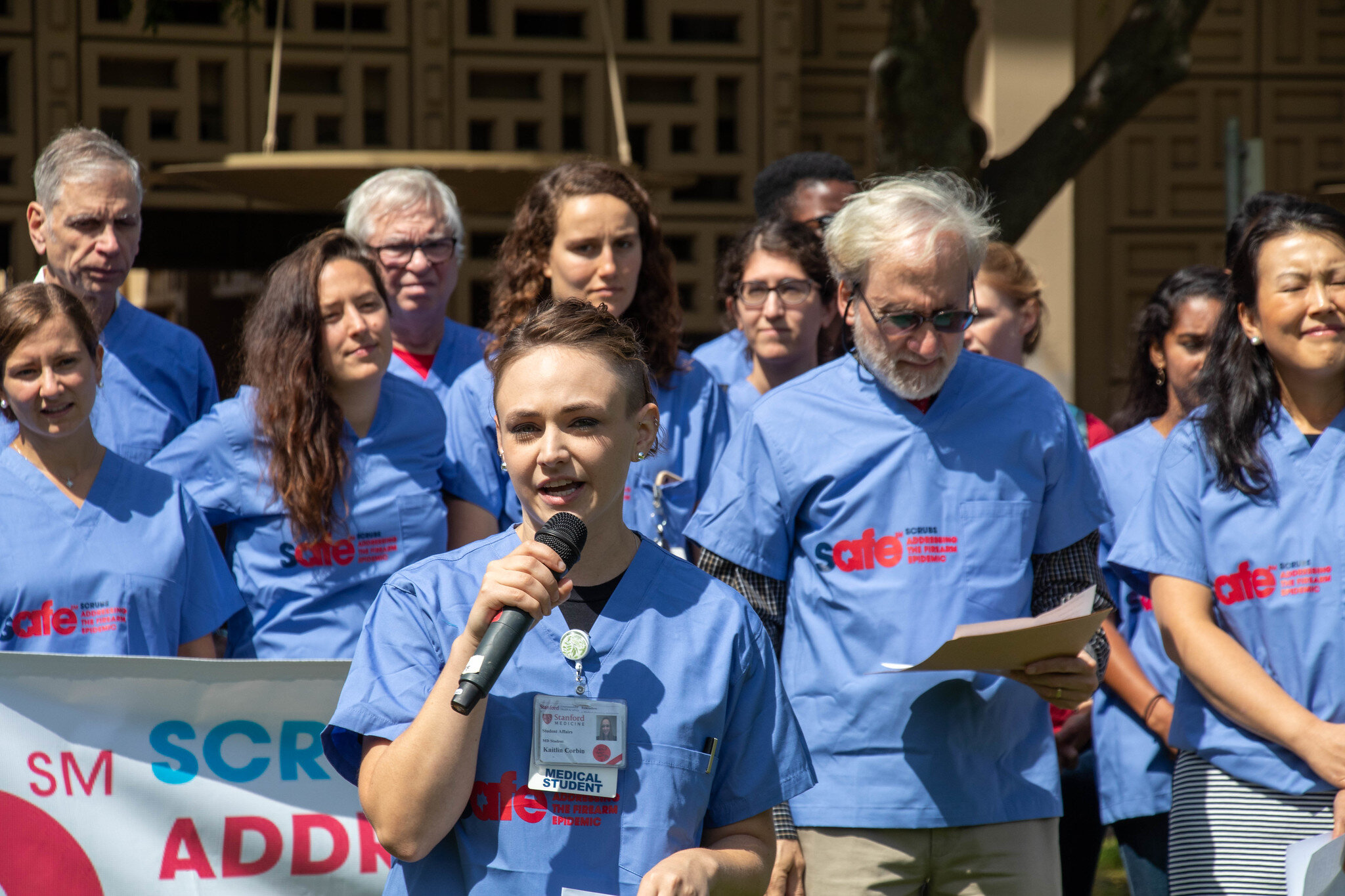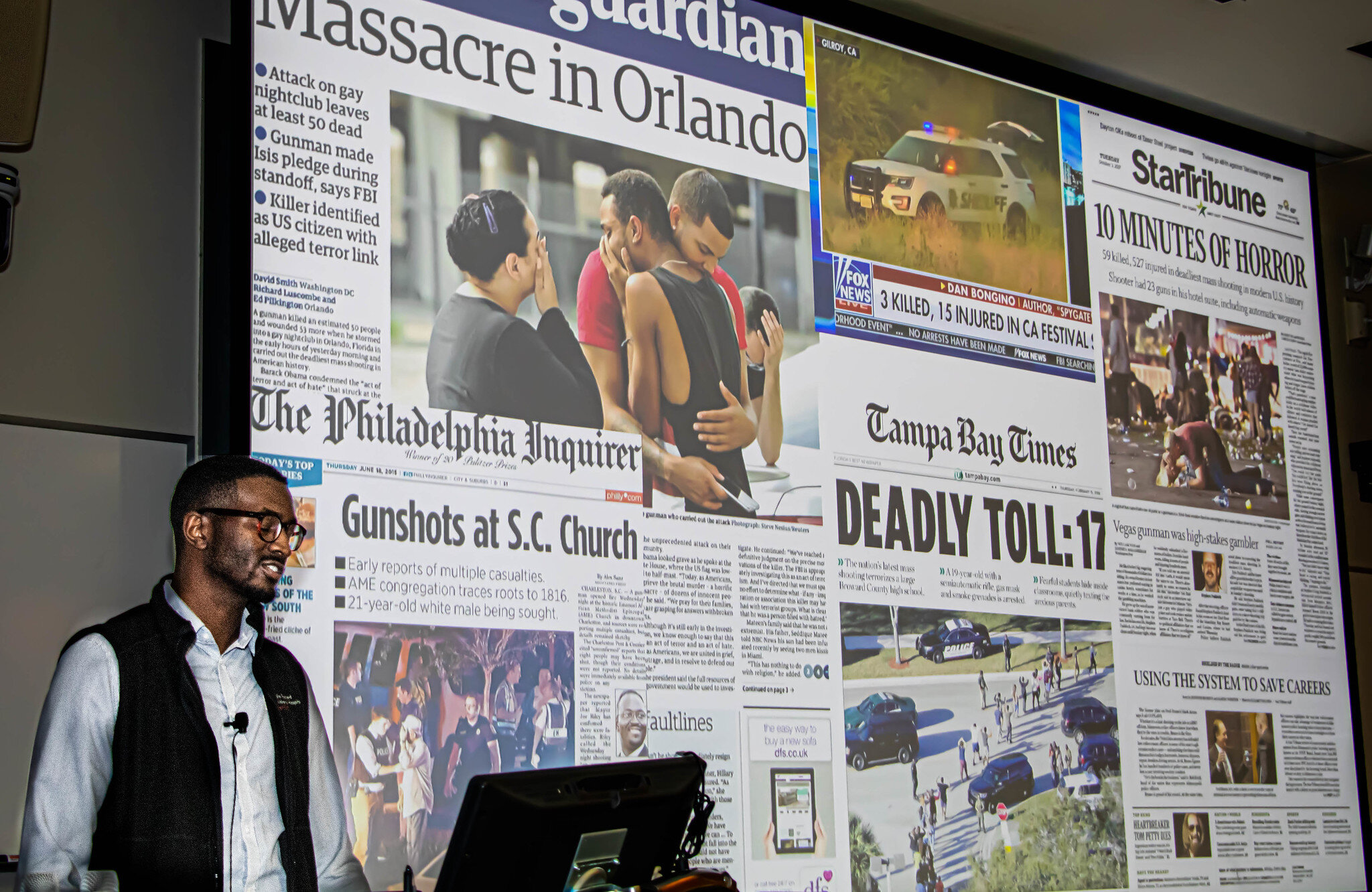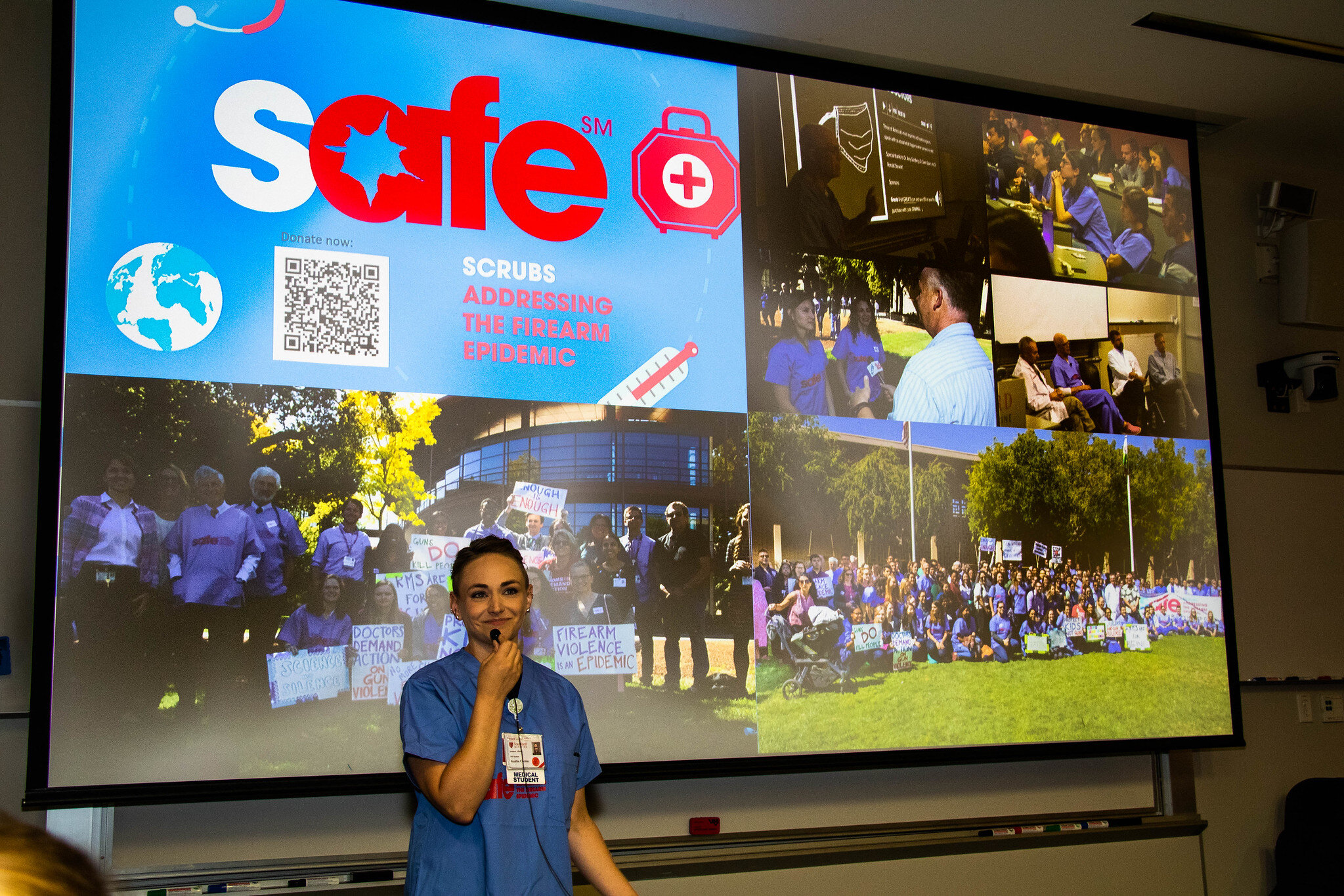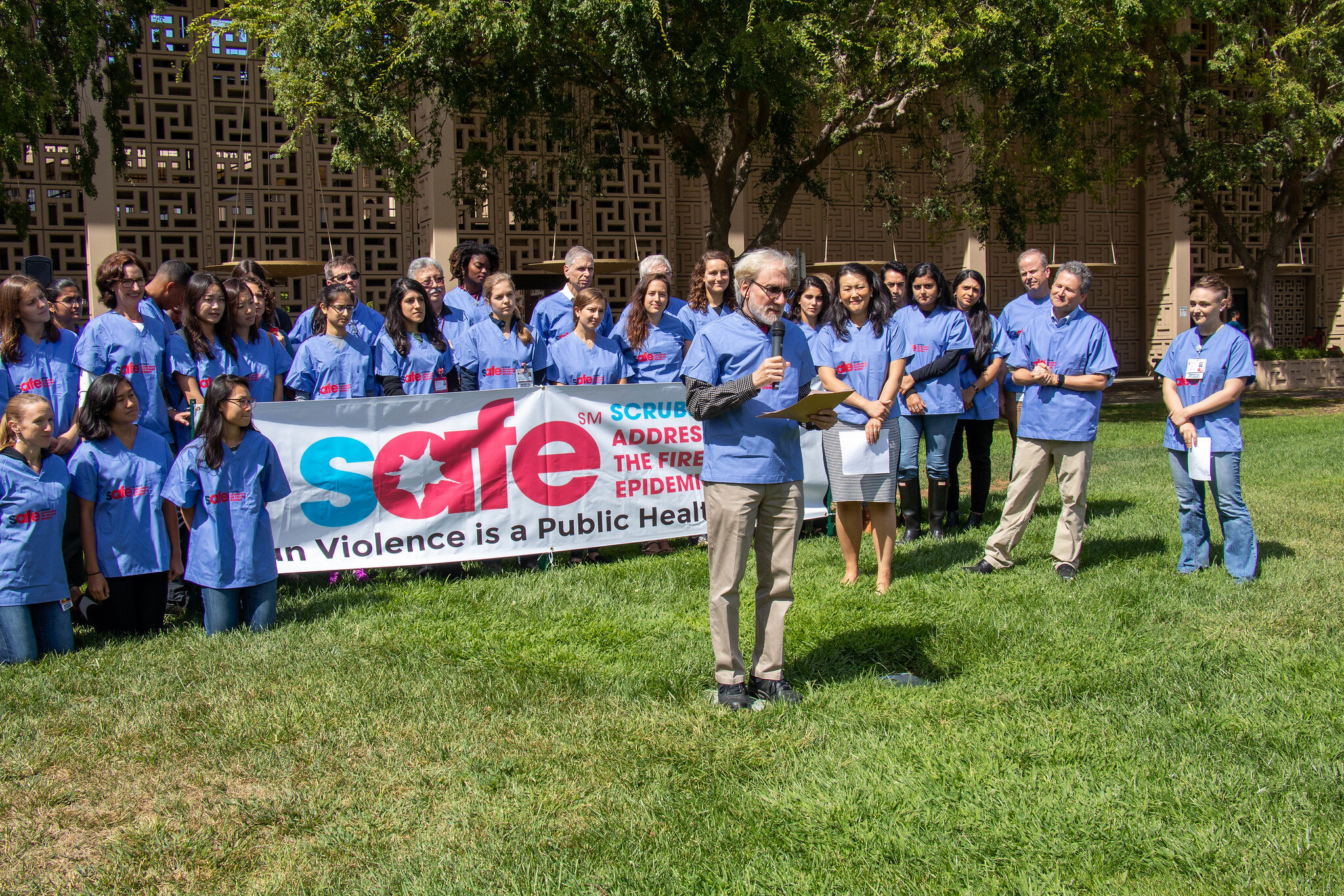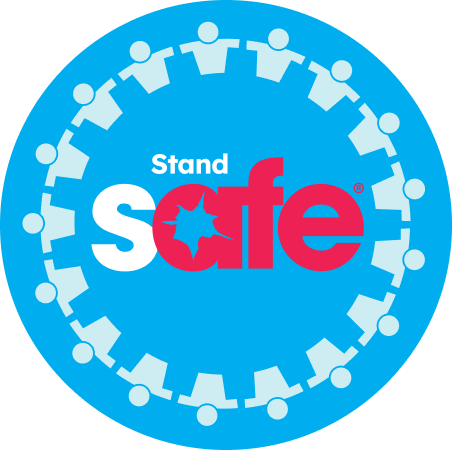Donate to SAFE
Your contribution will:
Help healthcare providers save lives as they develop a culture of safety around firearms; to be considered a tool that requires training to use safely
Connect healthcare providers with legislators at the local and national level to advocate for public health driven policies for firearms
Allow SAFE to share the firearm injury prevention education modules developed with clinicians and healthcare institutions
Make firearm injury prevention become a focus of every medical and nursing school across the country
Register for SAFE’s Fall event, co-hosted by Brady Organization’s THIS IS OUR LANE
Clinicians and Firearms was developed in collaboration with Stanford Educational Technology, medical students, faculty, and practicing clinicians.
An innovative course designed to bridge a critical gap in medical education by equipping healthcare professionals with the knowledge and skills to help prevent gun violence in their patients and their communities.
SAFE Print Kit
An easily accessible resource bank with
materials, order forms and guidelines for your SAFE Chapter to reference!
Partnership Alert!
SAFE Chapters across the country have an opportunity to team with a local Be SMART chapter up to help educate your medical school community about the gun violence epidemic.
You can receive support in planning a Fall SAFE Chapter event at your medical school, focusing on the importance of secure storage education for all clinicians.
Take 30 seconds to share when you are free for a 15-20 minute call with a local Be SMART leader.
SAFE has forged a partnership with Be SMART, a program of Everytown for Gun Safety’s Support Fund.
Read about SAFE's support for the Black Lives Matter movement and the steps we will take to confront systemic racism.
Read on Mercury News
Why we need the Assault Weapons Ban of 2019 by Dr. Dean L. Winslow
We are U.S. physicians, nurses, and healthcare professionals dedicated to eliminating the American firearm violence epidemic through research, education, and evidence-based policy.
American Firearm Violence
Is An Epidemic.
Gun violence in the United States is a medical threat of epidemic proportions. In 2015, firearm related mortality rates exceeded motor vehicle traffic mortality for the first time in American history and has remained higher in all subsequent data (1). In 2016, 38,656 lives were lost to firearms, almost 8,000 of these deaths were individuals under 25; and firearms caused over 116,000 injuries. The 2014-2016 Ebola epidemic claimed 11,310 lives, less than a third of the number of deaths caused by firearms in a single year (2).
Updates from SAFE
At SAFE we are committed to ensuring that all healthcare providers are equipped with evidence-based knowledge and skills to help their patients, communities, and legislators make informed decisions on firearm use and ownership.
America's Firearm Epidemic Transcends Political Allegiance
Regardless of individual views about gun ownership, we can all agree that reducing the number of deaths and injuries from firearms is a universal goal of utmost importance.
“A natural extension of working in public hospitals is to witness gun violence as a medical and public health issue, before it is anything else. Framed in this manner, the injury to the human body, whether accidental, self-inflicted or otherwise, becomes just as preventable as the small pox and diphtheria that took lives in generations past. It is inspiring to see medical students and physicians, decorated war veterans among them, come together to carry on a shared goal: to save lives."
-Abraham Verghese MD, Professor of Medicine, Stanford University
Despite the immense threat that gun violence poses to individual and public health, research barriers in the US impede our ability to gain knowledge that would allow healthcare providers and policy makers to more effectively eliminate this public health crisis.
However, the research we do have show that firearms in the home increase the risk of homicide and violent death of members of the household (3,4), and is a risk factor for suicide death (5). We aim to make Americans safer by supporting scientifically back firearm practice and policy.
ways to get involved
Reach out to us at [email protected] with any questions or if you want to learn more about our work.
Follow us on Twitter @SafeStand to stay up to date on the firearm violence prevention community
Donate today to sponsor
much-needed research and to improve firearm safety
(1) Centers for Disease Control and Prevention, National Centers for Injury Prevention and Control. Web-based Injury Statistics Query and Reporting System (WISQARS) [online]. (2016) {cited Jul 10}. Available from: www.cdc.gov/injury/wisqars
(2) “Ebola (Ebola Virus Disease).” Centers for Disease Control and Prevention, Centers for Disease Control and Prevention, 27 Dec. 2017, www.cdc.gov/vhf/ebola/history/2014-2016-outbreak/case-counts.html.
(3) Kellermann, Arthur L., et al. "Gun ownership as a risk factor for homicide in the home." New England Journal of Medicine329.15 (1993): 1084-1091.
(4) Dahlberg, Linda L., Robin M. Ikeda, and Marcie-jo Kresnow. "Guns in the home and risk of a violent death in the home: findings from a national study." American Journal of Epidemiology 160.10 (2004): 929-936.
(5) Miller, Matthew, et al. "Firearms and suicide in the United States: is risk independent of underlying suicidal behavior?." American journal of epidemiology 178.6 (2013): 946-955.

